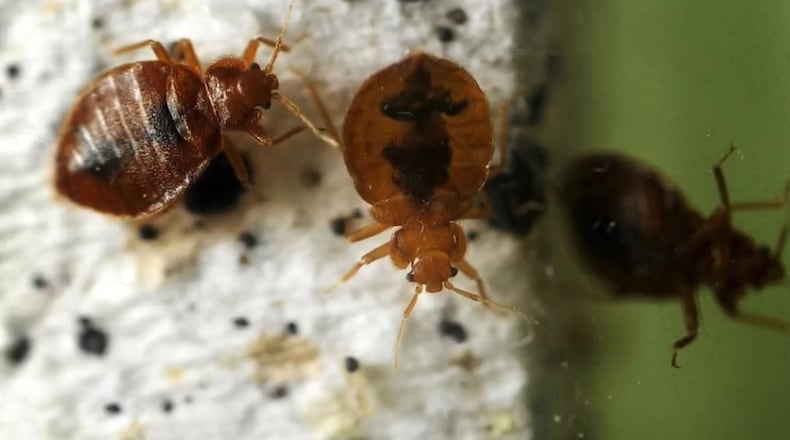Exterminators say demand for their residential treatment services increased as people were stuck at home, and bed bugs are just one the many kinds of unwelcome creepy-crawlers and vermin that invade homes and businesses.
“As people shifted from working in offices to working from home, we saw a continued interest in our home pest control services,” said Ben Hottel, technical services manager and entomologist for Orkin.
Pests are a common problem in the Buckeye State.
Ohioans living in more than 752,000 housing units across the state saw rodents within the past year, and residents in about 128,500 units encountered cockroaches, according to the most recent data from the U.S. Census’ American Housing Survey.
Dayton ranked 28th on Orkin’s top bed bug metro areas list released earlier this year, moving up 21 spots from the company’s 2020 rankings.
Only Toledo saw a larger jump: The Glass City moved into 27th place from the 50th spot.
This year’s rankings were based on bed bug treatments from Dec. 1, 2019 to Nov. 30, 2020.
Chicago topped the list, followed by Baltimore and Washington D.C.
Columbus ranked 5th; Cleveland 6th; and Cincinnati 8th.
Bed bugs feed on human blood, and they often spread by hiding in luggage and other personal belongings.
The elusive, nocturnal insects are commonly found in furniture, mattresses, box springs and behind headboards.
They also reproduce quickly and can survive months without a meal.
“Once they get a ride into a hotel room or home, their populations will start to grow,” said Hottel, with Orkin. “Females can deposit one to five eggs a day and may lay 200 to 500 eggs in their lifetime.”
Cities that are popular tourist and travel destinations have higher cases of bed bugs, he said, and there was reduced commercial demand for bed bug services during the pandemic.
Hottel said he expects to see increased requests for bed bug services as travel bounces back.
A-1 Able Pest Doctors saw a decrease in bed bug calls during the pandemic, which makes sense because they are social insects, said Megan Crawford, president of the company, which has locations in Dayton, Springfield and Troy.
“They are amazing hitchhikers,” she said. “When we stop performing social aspects of our lives we take away their exposure.”
But A-1 Able saw increased demand for pest control and sanitization services since the start of the outbreak, Crawford said.
Residents spent a lot more time at home and became aware of bug and rodent activities they might not otherwise notice, she said.
Crawford said local rodent problems have intensified.
Ohio is home to about 4.8 million occupied housing units, and people living in about 16% of those units reported seeing mice or rats in the past year, according to 2019 American Housing Survey data.
In comparison, residents of less than 3% of the housing units statewide said they saw cockroaches in the past 12 months.
Dayton ranked 49th on Orkin’s list of the top 50 “rattiest” cities in the nation that was released last fall.
Cleveland, Cincinnati and Columbus all ranked much higher on the list.
About the Author




